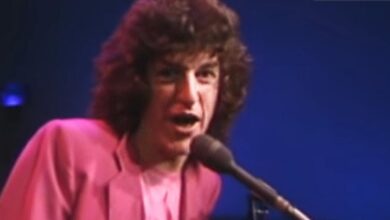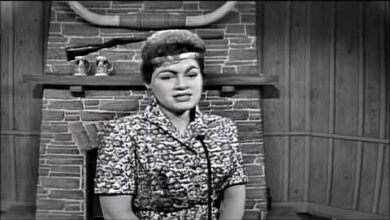Elvis’s Swan Song: A Daring Showcase Despite Being Noticeably Sick
Elvis Presley’s final performance, which took place on June 26, 1977, at the Market Square Arena in Indianapolis, Indiana, is a significant moment in music history. This concert marked the last time the King of Rock and Roll would grace the stage before his untimely death on August 16, 1977. Despite the challenges he faced during this period, Elvis delivered a performance that is remembered for its emotional weight and historical significance.
By 1977, Elvis Presley was battling numerous health issues, including the effects of prescription drug use and the pressures of his legendary career. His physical condition had visibly deteriorated, and he was far from the vibrant performer who had taken the world by storm in the 1950s. However, his talent and charisma remained undeniable, even in his final days. The June 26 concert was part of a grueling tour schedule that took a toll on Elvis, yet he still managed to connect with his audience, demonstrating the deep bond he shared with his fans.
One of the most poignant moments of this final concert was Elvis’s rendition of “Can’t Help Falling in Love.” This song, originally recorded in 1961 for the film “Blue Hawaii,” had become one of Elvis’s signature ballads, and he often used it as the closing number in his concerts. On this night in Indianapolis, the performance of this classic song took on a deeper meaning, as it would be the last time Elvis would sing it in front of a live audience. Despite his weakened state, Elvis’s voice still carried the warmth and emotion that had made him a global icon.
The atmosphere at the Market Square Arena was charged with emotion as fans realized they were witnessing the end of an era. Elvis’s band, including longtime collaborators like guitarist James Burton and drummer Ronnie Tutt, supported him with a professionalism that had become a hallmark of his live shows. The band members were well aware of Elvis’s declining health, yet they performed with the same dedication and skill that had defined their years together on the road. This final show was a testament to the enduring power of Elvis’s music and the loyalty of his band.
In addition to “Can’t Help Falling in Love,” Elvis’s setlist that night included a mix of his greatest hits and more recent material. Songs like “Jailhouse Rock,” “Hound Dog,” and “Love Me Tender” were met with enthusiastic responses from the audience, many of whom had followed Elvis’s career for decades. These classic tracks reminded fans of the incredible journey Elvis had taken from his early days at Sun Records to his status as a cultural phenomenon.
Elvis’s impact on music and popular culture cannot be overstated. Born on January 8, 1935, in Tupelo, Mississippi, Elvis Aaron Presley grew up in a modest household where he was exposed to gospel music, country, and blues. His unique ability to blend these genres into a new sound catapulted him to fame in the mid-1950s. With his dynamic stage presence, distinctive voice, and good looks, Elvis became a symbol of the burgeoning youth culture and a lightning rod for controversy due to his provocative performance style.
Over the years, Elvis’s career was marked by numerous achievements, including 18 No. 1 hits on the Billboard Hot 100 and over 600 million records sold worldwide. His influence extended beyond music to film, fashion, and even social change, as he challenged racial barriers in a segregated America by popularizing music rooted in African American traditions. Elvis’s legacy as the “King of Rock and Roll” is cemented by his ability to bridge cultural divides and bring people together through the power of music.
However, by the late 1970s, the pressures of fame and personal struggles had taken a toll on Elvis. His health began to decline, and his once-energetic performances were often overshadowed by concerns about his well-being. Yet, even as he faced these challenges, Elvis remained committed to his music and his fans. The June 26, 1977, concert in Indianapolis was a reflection of this commitment, as he continued to perform despite his obvious difficulties.
In the months following this final performance, Elvis’s health deteriorated further. On August 16, 1977, he was found unresponsive at his Graceland home in Memphis, Tennessee, and was pronounced dead later that day. The news of his passing shocked the world, and fans mourned the loss of a cultural icon whose influence had shaped the course of modern music. Elvis’s death marked the end of an era, but his legacy has endured, with his music continuing to inspire new generations of artists and fans.
The footage and recordings from Elvis’s last concert have become cherished artifacts for fans and historians alike. They offer a glimpse into the final moments of a legendary career and serve as a reminder of Elvis’s unparalleled contribution to music. While his last performance may have been marked by physical decline, it also demonstrated the enduring power of his artistry and the deep connection he shared with his audience.
Elvis Presley’s final song, performed on that fateful night in Indianapolis, remains a poignant symbol of the end of an extraordinary journey. It encapsulates the highs and lows of a life lived in the spotlight, and it continues to resonate with those who remember the King not just for his music, but for the indelible mark he left on the world.



